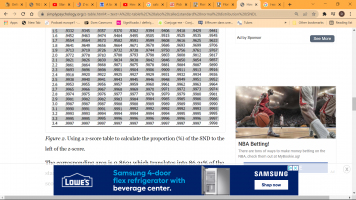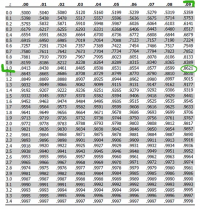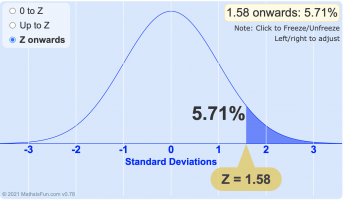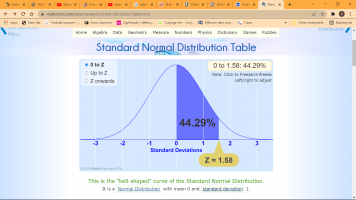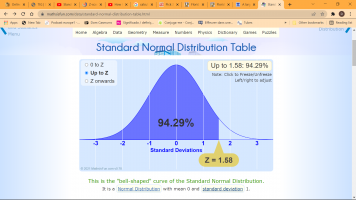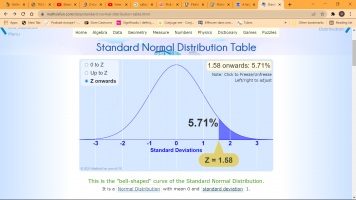eddy2017
Elite Member
- Joined
- Oct 27, 2017
- Messages
- 2,525
Hi, i would need a hint for this one.
what to zero in on first?. just a hint.
A large group of test scores is normally distributed with mean 78.2 and standard deviation 4.3. What percent of the students scored 85 or better (nearest whole percent)?
Possible Answers:
6%
4%
5%
8%
7%
what to zero in on first?. just a hint.
A large group of test scores is normally distributed with mean 78.2 and standard deviation 4.3. What percent of the students scored 85 or better (nearest whole percent)?
Possible Answers:
6%
4%
5%
8%
7%

